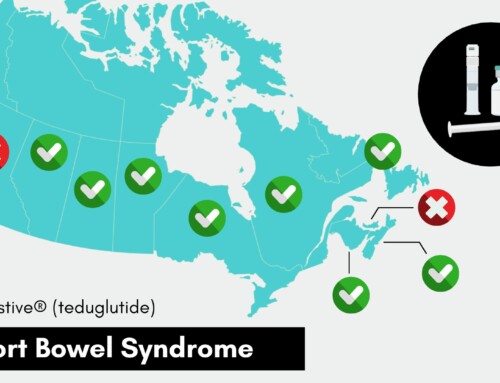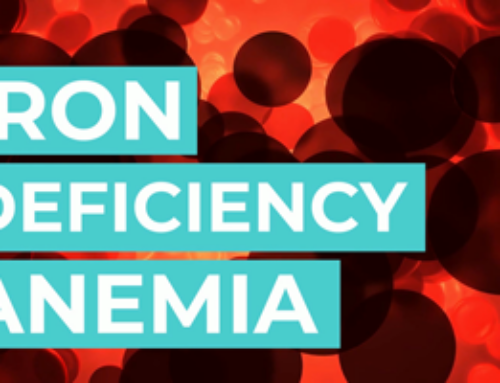Health Canada Approves Stelara® for the Treatment of Adults with Moderately to Severely Active Crohn’s Disease
STELARA® offers a new approach to treating Crohn’s disease in Canada, which has one of the highest rates of this inflammatory bowel disease worldwide1
CNW – TORONTO, ON (December 14, 2016) — Janssen Inc. announced today that Health Canada has issued a Notice of Compliance (NOC) for STELARA® (ustekinumab) indicated for the treatment of adult patients with moderately to severely active Crohn’s disease (CD), who have had an inadequate response, loss of response to, or were intolerant to either immunomodulators or one or more tumour necrosis factor-alpha (TNFα) antagonists, or have had an inadequate response, intolerance or demonstrated dependence on corticosteroids.2 STELARA® is the first and only biologic therapy for Crohn’s disease targeting interleukin 12 (IL-12) and interleukin 23 (IL-23), which play a key role in inflammatory and immune responses.3
Crohn’s disease is a chronic inflammatory condition of the gastrointestinal tract that affects approximately 129,000 Canadians.4 In Canada, approximately one in every 150 Canadians is living with Crohn’s or colitis.5
“STELARA® has been used successfully to treat patients with psoriasis and psoriatic arthritis for years. It’s a welcome new treatment for Canadians with Crohn’s disease,” said Dr. Brian G. Feagan*, M.D., Senior Scientific Officer, Robarts Clinical Trials Inc., Western University, London, Ontario, and UNITI study investigator.
The Health Canada approval of STELARA® is based on three pivotal Phase 3 studies (UNITI-1, UNITI-2 and IM-UNITI), recently published in the New England Journal of Medicine.6 The studies included more than 1,300 patients who were either new to, experienced with, or failed on biologic therapy (TNF blockers). The studies showed patients responding earlier to therapy, with some seeing noticeable improvement as early as three weeks,7 and others entering remission from their symptoms in six weeks after the start of therapy (34 per cent vs. 21.5 per cent in the placebo group in the UNITI-1 study and 56 per cent vs. 28.7 per cent in the placebo group in the UNITI-2 study).8 Additionally, the majority of those who responded to induction dosing and continued treatment with STELARA® subcutaneous maintenance doses every eight weeks were in remission at the end of 44 weeks (52 weeks from initiation of the induction dose).9
“Crohn’s disease is a lifelong condition that can impact a person’s quality of life significantly,” says Mina Mawani, President and Chief Executive Officer, Crohn’s and Colitis Canada. “The introduction of a new therapy is an important advancement in treating patients, as the treatment offers an alternate method to induce and maintain remission. With one of the highest rates of Crohn’s disease in the world, it’s important that Canadians have access to new treatment options because not all therapies will work for everyone living with this inflammatory bowel disease.”
“Crohn’s disease has no cure and patients living with this disease are in need of effective medications today. There are so few treatment options for this inflammatory bowel disease, so we are extremely pleased that STELARA® is now available for Canadians living with Crohn’s disease,” said Gail Attara, President and Chief Executive Officer of the Gastrointestinal Society, known for its www.badgut.org information resource. “STELARA® offers hope for a better life to individuals with this life-altering condition.”
About Crohn’s Disease
Crohn’s disease is a chronic inflammatory condition that can occur anywhere in the gastrointestinal tract. There is currently no cure for Crohn’s disease.10 Genetics are believed to play an important role because the incidence of CD is higher in those with a family history. Symptoms of Crohn’s disease can vary but often include abdominal pain and tenderness, frequent diarrhea, rectal bleeding and weight loss.11 Hospitalization is at times required for severe disease symptoms, to treat certain complications, and for surgery.12
About STELARA® (Ustekinumab)
STELARA® is the first and only biologic therapy for Crohn’s disease targeting interleukin 12 (IL-12) and interleukin 23 (IL-23), which play a key role in inflammatory and immune responses.13 With STELARA®, the recommended induction treatment regimen is a single intravenous (IV) tiered dose based on body weight. The recommended maintenance dose of STELARA® is 90 mg administered subcutaneously. The first subcutaneous dose should be given at week 8 following the intravenous induction dose. Subsequent doses should be given every 8 weeks thereafter.14 In some patients, (e.g. those with low inflammatory burden), a single intravenous dose followed by 90 mg subcutaneous dosing 8 weeks later, then every 12 weeks thereafter may be considered at the discretion of the treating physician. Patients should have their dose frequency adjusted to every 8 weeks if inadequate response occurs.15
STELARA® is also indicated in Canada for the treatment of adults living with psoriasis, adolescent patients with psoriasis and adult patients with active psoriatic arthritis.16
For more information, visit www.janssen.com/canada or the STELARA® Product Monograph.
About the Janssen Pharmaceutical Companies
At the Janssen Pharmaceutical Companies of Johnson & Johnson, we are working to create a world without disease. Transforming lives by finding new and better ways to prevent, intercept, treat and cure disease inspires us. We bring together the best minds and pursue the most promising science. We are Janssen. We collaborate with the world for the health of everyone in it. Learn more at http://www.janssen.com/canada/. Follow us on Twitter @JanssenCanada.
Media Contact:
Teresa Pavlin
Office: (416) 382-5017
Investor Contact:
Leslie Fishman
Office: (732) 524-3922
*Dr. Feagan was not compensated for any media work. He has been a paid consultant to Janssen Inc.
References
1 Rocchi A, Benchimol EI, Bernstein CN, et al. Inflammatory bowel disease: a Canadian burden of illness review. Can J Gastroenterol. 2012;26(11):811-7.
2 STELARA® Product Monograph. Janssen Inc. Updated December 12, 2016
3 STELARA® Product Monograph. Janssen Inc. Updated December 12, 2016
4 Rocchi A, Benchimol EI, Bernstein CN, et al. Inflammatory bowel disease: a Canadian burden of illness review. Can J Gastroenterol. 2012;26(11):811-7.
5 Crohn’s and Colitis Canada. http://www.crohnsandcolitis.ca/site/c.dtJRL9NUJmL4H/b.9221471/k.5D6A/Facts_and_Statistics.htm. Accessed November 22, 2016.
6 Feagan, B.G. et al. Ustekinumab as Induction and Maintenance Therapy for Crohn’s Disease. New England Journal of Medicine. 2016;375:1946-60.
7 Feagan, B.G. et al. Ustekinumab as Induction and Maintenance Therapy for Crohn’s Disease. New England Journal of Medicine. 2016;375:1946-60.
8 Feagan, B.G. et al. Ustekinumab as Induction and Maintenance Therapy for Crohn’s Disease. New England Journal of Medicine. 2016;375:1946-60.
9 Feagan, B.G. et al. Ustekinumab as Induction and Maintenance Therapy for Crohn’s Disease. New England Journal of Medicine. 2016;375:1946-60.
10 Rocchi A, Benchimol EI, Bernstein CN, et al. Inflammatory bowel disease: a Canadian burden of illness review. Can J Gastroenterol. 2012;26(11):811-7.
11 Rocchi A, Benchimol EI, Bernstein CN, et al. Inflammatory bowel disease: a Canadian burden of illness review. Can J Gastroenterol. 2012;26(11):811-7.
12 Rocchi A, Benchimol EI, Bernstein CN, et al. Inflammatory bowel disease: a Canadian burden of illness review. Can J Gastroenterol. 2012;26(11):811-7.
13 STELARA® Product Monograph. Janssen Inc. Updated December 12, 2016
14 STELARA® Product Monograph. Janssen Inc. Updated December 12, 2016
15 STELARA® Product Monograph. Janssen Inc. Updated December 12, 2016
16 STELARA® Product Monograph. Janssen Inc. Updated December 12, 2016
Cautions Concerning Forward-Looking Statements
This press release contains “forward-looking statements” as defined in the Private Securities Litigation Reform Act of 1995 regarding the benefits and availability of STELARA®. The reader is cautioned not to rely on these forward-looking statements. These statements are based on current expectations of future events. If underlying assumptions prove inaccurate or known or unknown risks or uncertainties materialize, actual results could vary materially from the expectations and projections of Janssen Inc. and/or Johnson & Johnson. Risks and uncertainties include, but are not limited to: uncertainty of commercial success; manufacturing difficulties and delays; competition, including technological advances, new products and patents attained by competitors; challenges to patents; product efficacy or safety concerns resulting in product recalls or regulatory action; changes in behavior and spending patterns or financial distress of purchasers of health care products and services; changes to applicable laws and regulations, including global health care reforms; and trends toward health care cost containment. A further list and descriptions of these risks, uncertainties and other factors can be found in Johnson & Johnson’s Annual Report on Form 10-K for the fiscal year ended January 3, 2016, including in Exhibit 99 thereto, and the company’s subsequent filings with the Securities and Exchange Commission. Copies of these filings are available online at www.sec.gov, www.jnj.com or on request from Johnson & Johnson. None of the Janssen Pharmaceutical Companies or Johnson & Johnson undertakes to update any forward-looking statement as a result of new information or future events or developments.




















